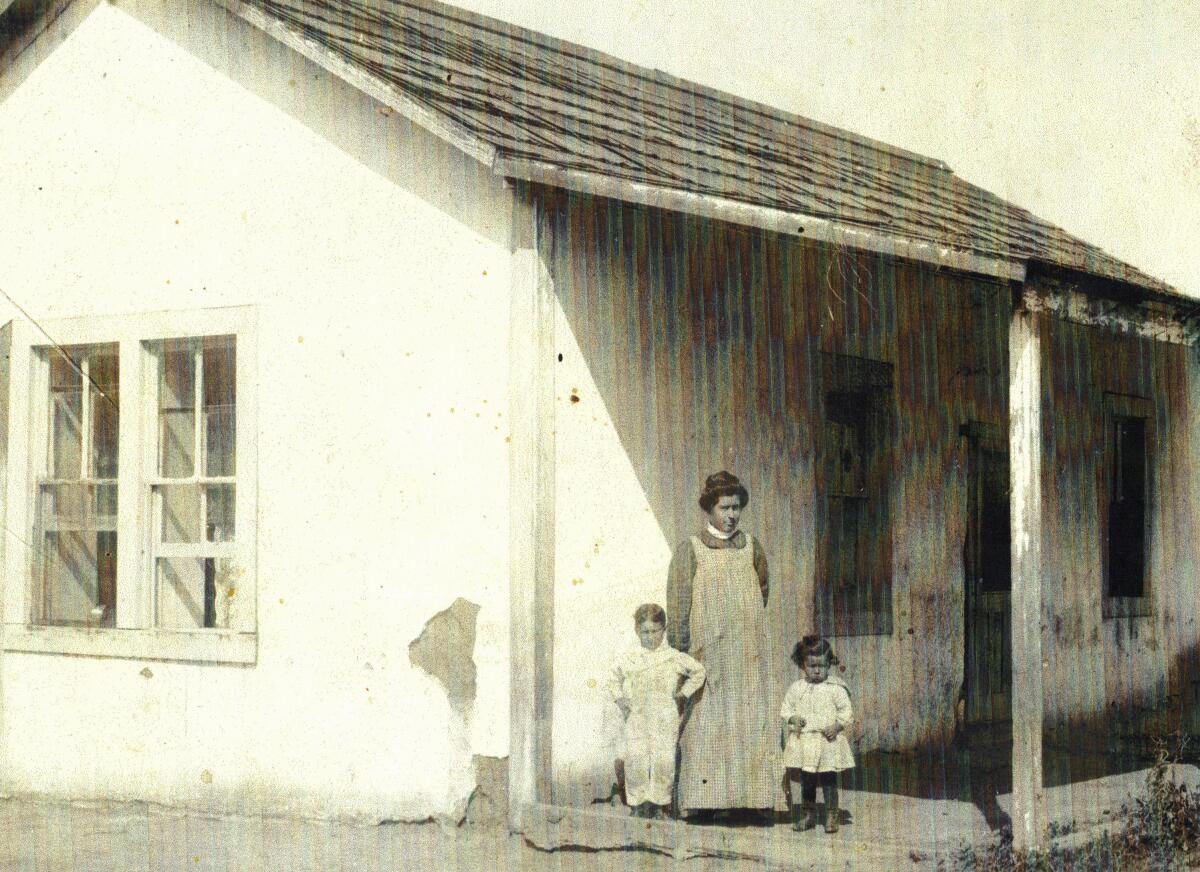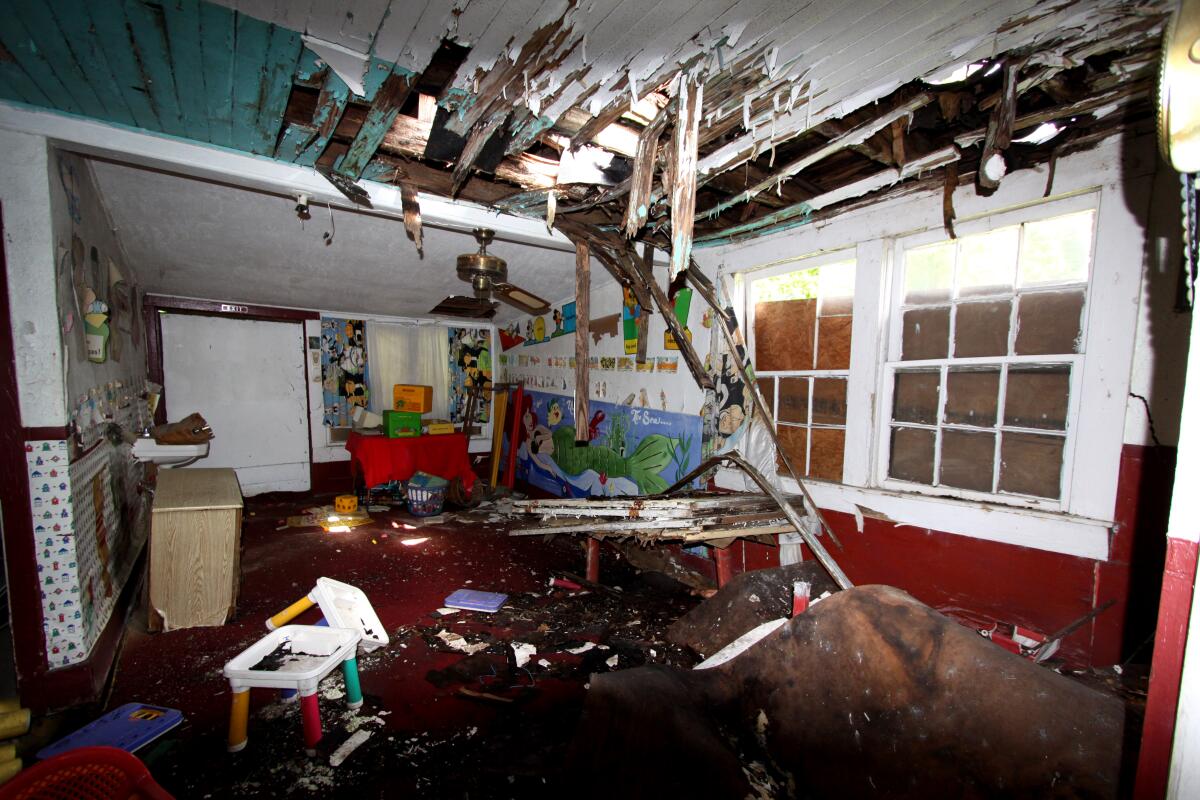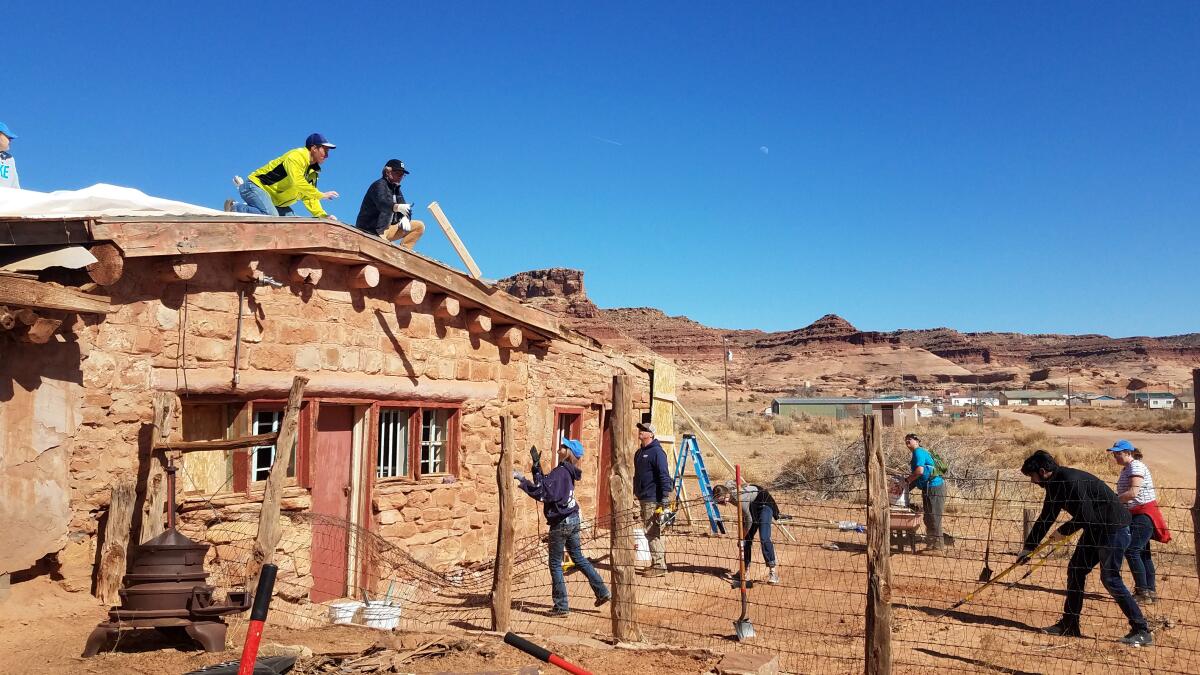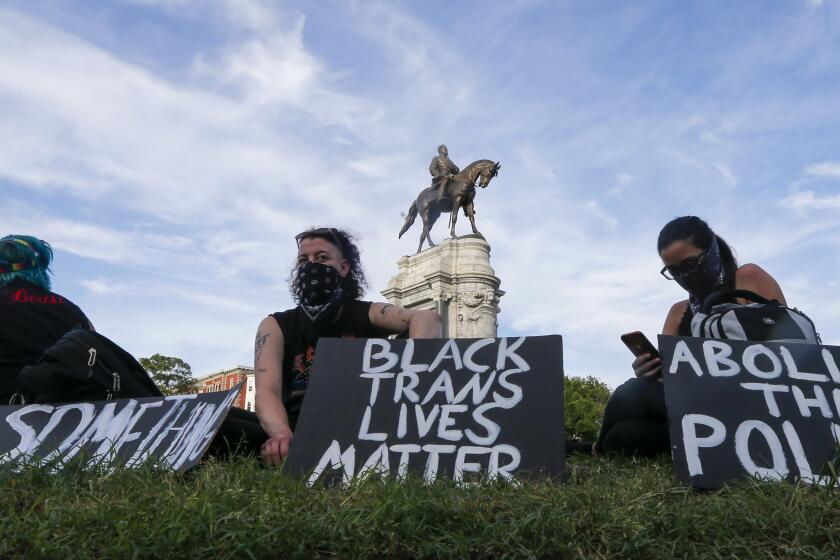POC history quietly wins a spotlight on National Trust’s 2021 endangered places list

Since its start in 1988, the National Trust for Historic Preservation’s annual endangered places list has spotlighted more than 300 historic sites across America at risk for destruction or irreparable damage, ranging from the National Mall Tidal Basin in Washington, D.C., to Civil War battlefields to the East L.A. high schools that helped ignite the Chicano power movement.
This year’s list of 11 most endangered historic places, announced last week, is devoted entirely to sites linked to the histories of people of color, including the Trujillo Adobe in Riverside, built in 1862 and connected to the story of migration and settlement in inland California.
Other sites recognized this year by the privately funded nonprofit preservation organization include the Georgia B. Williams Nursing Home in Georgia where Beatrice Borders, a Black midwife, persevered through Jim Crow-era racism to deliver more than 6,000 babies; the Oljato Trading Post in Utah, a shop and social hub for Navajo communities built in 1921; Black-owned farm properties that served as overnight campsites for civil rights demonstrators marching in Alabama from Selma to Montgomery in 1965; and the Summit Tunnels 6 & 7 and Summit Camp Site in Truckee, Calif., which tell the story of Chinese workers who built the Transcontinental Railroad through the Sierra Nevada from 1865 to 1867.
Although this year’s list appeared to be notable for its theme, the National Trust said it could not confirm whether the exclusive focus on sites connected to communities of color was a first in the organization’s history.
While arts groups nationwide are championing their diversity and inclusion efforts and their attempts to address systemic racial bias in the wake of George Floyd’s murder and the resulting uprisings — possibly the largest movement in U.S. history — the National Trust news release made no reference to race as the defining idea behind this year’s list. And when The Times asked whether the decision to focus on POC historical sites was related to the racial reckoning last year, representatives skirted the question repeatedly.
Awareness of bias in the preservation community appears to have grown. Partially driven by the global uprisings last summer, the Getty Conservation Institute and the city of Los Angeles recently announced the African American Historic Places Project, which would address a disparity in local landmark designations.
Last June, the National Trust changed its stance on Confederate monuments, expressing support for their removal from public spaces after the killings of Floyd, Breonna Taylor and Ahmaud Arbery.
When asked about the decision to change position on Confederate monuments, National Trust President and Chief Executive Paul Edmondson told The Times last year, “the killing of George Floyd has caused every organization and institution to look at their own policies, practices and positions.”
The National Trust for Historic Preservation now supports the removal of public Confederate monuments, regardless of how old or “historic” they may be.
This year, the organization was reluctant to make a direct connection among Floyd’s murder, the increased awareness of systemic racism and the decision to name all sites of color for its endangered places list.
“One of our core goals at the National Trust is to utilize Historic Places to tell the full true history of our country,” Katherine Malone-France, the organization’s chief preservation officer, said without specifically addressing Floyd or the national reckoning on race. “In doing so, historic preservation is a powerful tool for advancing justice and equity.”
Each site on the list represents “people standing up to say these places are important because they tell our stories and we see the stories of our ancestors and our communities in these places, but that they also offer a way forward,” Malone-France said.

The National Trust selects sites for its annual list after reviewing nominations (it received more than 100 for this year’s list) and touts that fewer than 5% of places listed have been entirely lost.
After several questions about the potential effect of last year’s uprisings on the 2021 list, the National Trust’s senior director of public affairs, Brenda Jones, interjected: “I’m trying to understand why that is an important element of the story from your perception?”
After The Times pointed out that the organization’s president had spoken about Floyd’s influence on the group’s stance on Confederate monuments, Jones added: “I think it is impossible to disconnect the activism, and the impact that George Floyd and Breonna Taylor and all these individuals have made on our society at large. The National Trust is not immune to that; of course, we are impacted by that.”
Jones said the 2021 list is a continuation of the National Trust’s ongoing efforts around inclusivity after the violent 2017 white nationalist rally in Charlottesville, Va. That same year, the organization created the African American Cultural Heritage Action Fund, a $25-million campaign to support 150 places representing Black culture that have been overlooked in American history.
The preservation field has evolved in recent years, including more conversations about “whose history and what history is being preserved and recorded and documented for the future,” said Nakita Reed, an architect and preservationist.

In a post titled “Preservation’s Existential Crisis,” published on the National Trust’s blog last June, Marisa Brown, a cultural historian and curator, wrote that preservation is changing dramatically, “becoming more interpretive, more engaged with issues of equity and social justice, more experimental, and more participatory.”
Brown recounted a talk she gave in January 2020 that appeared to make some in the audience uncomfortable as she made connections between preservation and white supremacy.
“Many of our historic buildings and sites memorialize settler colonialism and white supremacy, so preservationists are going to have to decide — either on a case-by-case basis or together, as a community — how to balance the mission of protecting so-called ‘historic’ sites with the urgent need to radically remake our built environment to tell a more accurate story of our past,” Brown wrote.
“Cultural shifts don’t usually happen steadily, but explosively, and it feels very much like what was on the distant horizon 10 years ago is now on our doorstep.”
Dedicating the endangered places list to communities of color is an act of “putting more histories front and center, particularly to the preservation community,” which typically skews older and whiter, Reed said. “And so it’s reminding those constituents that these places matter.”
For Nancy Melendez, a sixth-generation descendant of Trujillo Adobe founder Lorenzo Trujillo, who was a Genízaro — one of many Native Americans sometimes taken captive and raised by Spanish colonists — and guided families along the Old Spanish Trail to California, recognition by the National Trust represents validation.
“All of us in the family, in the greater family, and the families of all the descendants in the area knew how important this place was. The story wasn’t readily known in the community,” Melendez said.
Trujillo descendants have been advocating for the adobe for more than 40 years, Melendez said.
Inclusion on the National Trust’s endangered places list will raise awareness of rich and complex histories in the Inland Empire and help the family as it raises funds to save the structure from disrepair. (Last year, Riverside’s Harada House was named to the list.)
“It will engender neighborhood pride and have people ask those questions,” Melendez said. “All we ever hear is: ‘I didn’t know that was here,’ ‘I didn’t know about this,’ and if you don’t see it and you don’t have a reference source to go look it up, you don’t know about it.”
More to Read
The biggest entertainment stories
Get our big stories about Hollywood, film, television, music, arts, culture and more right in your inbox as soon as they publish.
You may occasionally receive promotional content from the Los Angeles Times.












